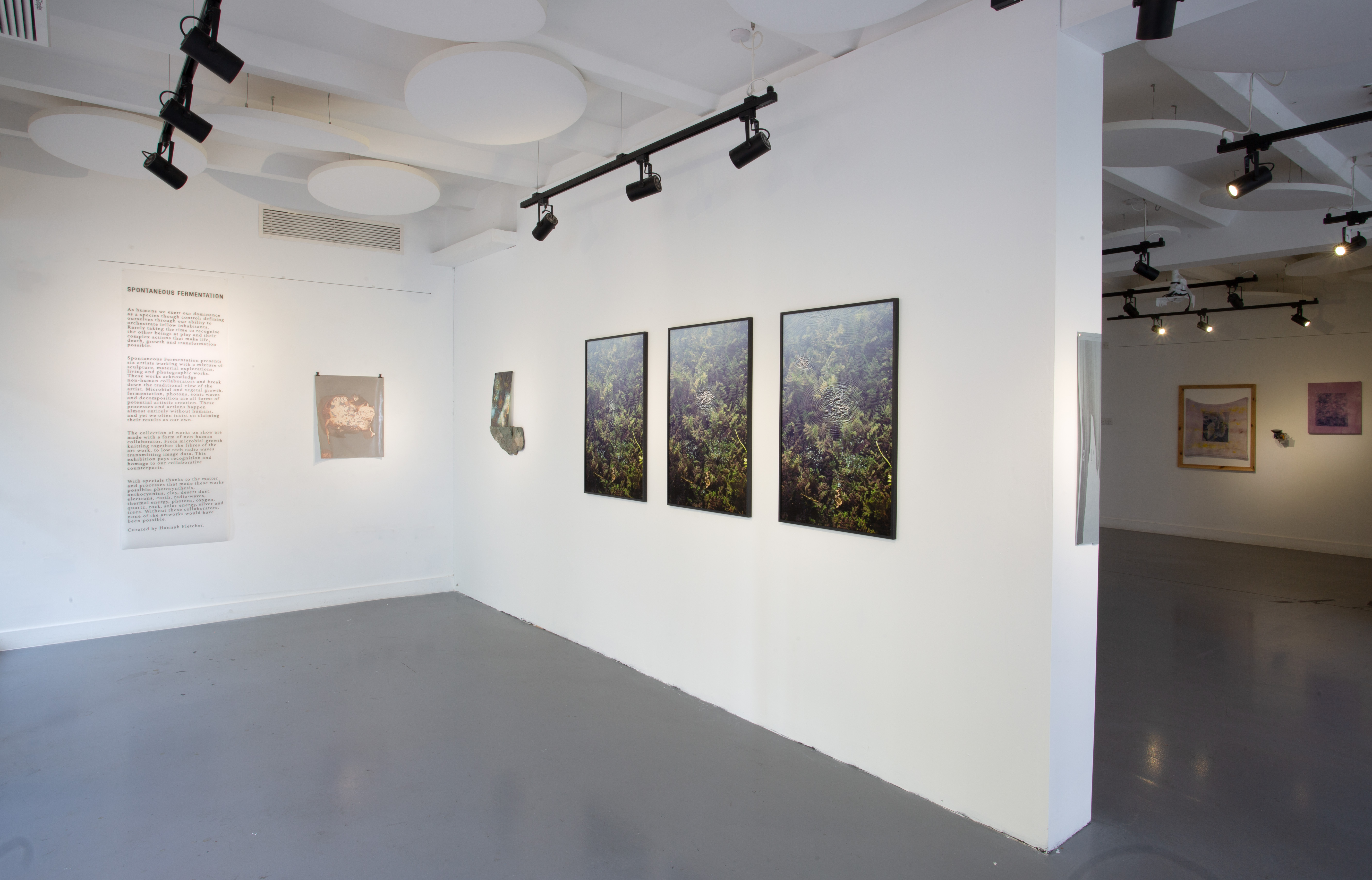
Radio Image Transmissions to a WEFAX: Life Began on Earth in Hydrothermal Vents
Archival Thermal Paper / 210 x 27”/ 533 x 68.60cm
39 paper lengths held together with pins
Archival Thermal Paper / 210 x 27”/ 533 x 68.60cm
39 paper lengths held together with pins
During guided research with Dr. Lisa Ruth Rand, I discovered the extreme environments of deep-sea Hydrothermal Vents and their ideal conditions for the origins of life on Earth.
It is still unclear how life on Earth began, but when a UCL - led team of scientists discovered the world’s oldest fossils in minerals rich from the planet’s crust, surrounded by extreme
heat, pressure, and chemicals lending themselves to chemosynthesis ~ a way for organisms to create their own energy similar to photosynthesis but use chemicals
instead of sunlight to make energy ~ a new theory of evolution was established. The discovery that this mediation between the cosmic and the mineral, the sky and the ground, the
transformation of energies and materials through chemical processes was not unique to this planet, changed the way we search the for life outside the Earth.
Like these scientists, I became fascinated with the natural and man-made extreme environments on Earth, extremophiles ~ organisms that inhabit these deep sea environments, and the extreme environments of non-terrestrial and near-Earth environments. NASA Astrobiologist Lynn Rothschild, a scientist who studies the origins of life on earth to better understand where to look for potential life in the universe, sees oxygen-breathing humans as also also living in an extreme environment. “From an objective point of view, oxygen is a challenging environment. We just don’t think about it because we are very well adapted to that environment”.
In February 2021, NASA landed the new Perseverance Rover on Mars, accelerating the search for second life, likely found as fossilized microbes. Extremophiles ~ microorganisms that live in conditions of extreme temperature, acidity, alkalinity or chemical concentration ~ already exist off planet due to human carelessness. In 2019, the Israeli lunar lander Beresheet crash-landed, ending the goal for the first privately funded spacecraft to make a controlled moon landing. It’s nonprofit founder, the Arch Mission Foundation, hid a ‘backup of planet Earth’ onboard, which included the foundation’s first lunar library, a DVD-sized archive containing 30 million pages of information, human DNA samples, and thousands of extremophiles call Tardigrades, a.k.a Waterbears, microscopic animals that can survive decades without food due to a hibernation state of cryptobiosis, which is triggered by a dry environment. When Beresheet crashed landed, it smeared the toughest animal in the known universe across the moon’s surface, opening up a Pandora’s box of what-if’s: How will the Tardigrades adapt to living on the moon? Will they confuse future experiments? Who will guard what gets off the earth? How will future propagation of life be conducted on celestial bodies?
In this act of anthropocentrism ~ a belief that human beings are the most important entity in the universe ~ Arch Mission also carried out panspermia (“seeds spread far”) ~ an idea until now, that life can travel through space from one hospitable location to the another. All of which was made possible by the invention of Nanofiche, an advanced storage nanotechnology created to preserve The Lunar Library’s data in space, for possibly billions of years. Plans are in place to bank these quartz discs in caves and deep under water, deposited ethereal records of earth for future humans, who would use a simple microscope to perform the levels of magnification needed to read them.
Our technologically mediated exploration and extraction of the extreme environments on Earth, and the non-terrestrial and near-Earth environments, mirror each other. Last year, Kathy Sullivan, the first US woman to complete a spacewalk in 1984, became the first woman to travel nearly seven miles (11km) to the lowest known point in the ocean, The Challenger Deep, which is part of the Mariana Trench. Her work as a crew member aboard the Space Shuttle Discovery, included studies on protein crystal growth, polymer membrane processing, and the effects of weightlessness and magnetic fields on an ion arc. As an accomplished oceanographer, she was appointed NOAA’s Chief Scientist in 1993, where she oversaw work in areas of climate science, integrated mapping and Earth-observing capabilities, satellites, space weather, and ocean observations and forecasts. Five hundred and sixty-two people have reached the altitude of space. In comparison only eight people have reached the deepest part of the ocean. Experts state a tiny fraction of money as been spent on ocean exploration compared to space exploration.
In 2017, the world’s first giant robot deep-sea mining machines were delivered by a UK-based company to Papua New Guinea, which is near to the Mariana Trench. They will be used to extract land-based mineral stores that concentrate in seafloor massive sulfides around Hydrothermal Vents, and other resources that supply our electronics, green technology, and other vital tools like medical imaging machines. We are literally stripping our home bare and consuming it to death. This living contradiction between human technological advancement and destruction, motivates my augural vision of the future which is both frightening and beautiful. I use a visual play between the real and the imagined to acknowledge the extreme environments of the deep sea and space are both targets of exploration being transformed by this negation. As officials believe they can extract and utilize celestial resources just as we extract and utilize the oceans resources, in the process destroying many regions and leaving measurable environmental footprints, underpins my belief that human nature has inherent destructive tendencies. I am moved to photograph environments transformed by the destruction of man as it reminds me of my own self-destructive tendencies. But through making artwork, I’ve learned self-destruction can be turned around, and this transformation can produce beautiful results.
One way to protect these sensitive environments is to set aside networks of protected areas. This printed sculptural object is a fine-art example of long-range communication between humans, concerning the urgent environmental crisis.
made with support from Sustainable Futures: Outer Space residency with the Land Art Agency
For more information on this colloborative art and science residency - click here
Installation shots from group show Spontaneous Fermentation curated by Hannah Flectcher held at SET Kensington in London, opened June 22nd 2023









